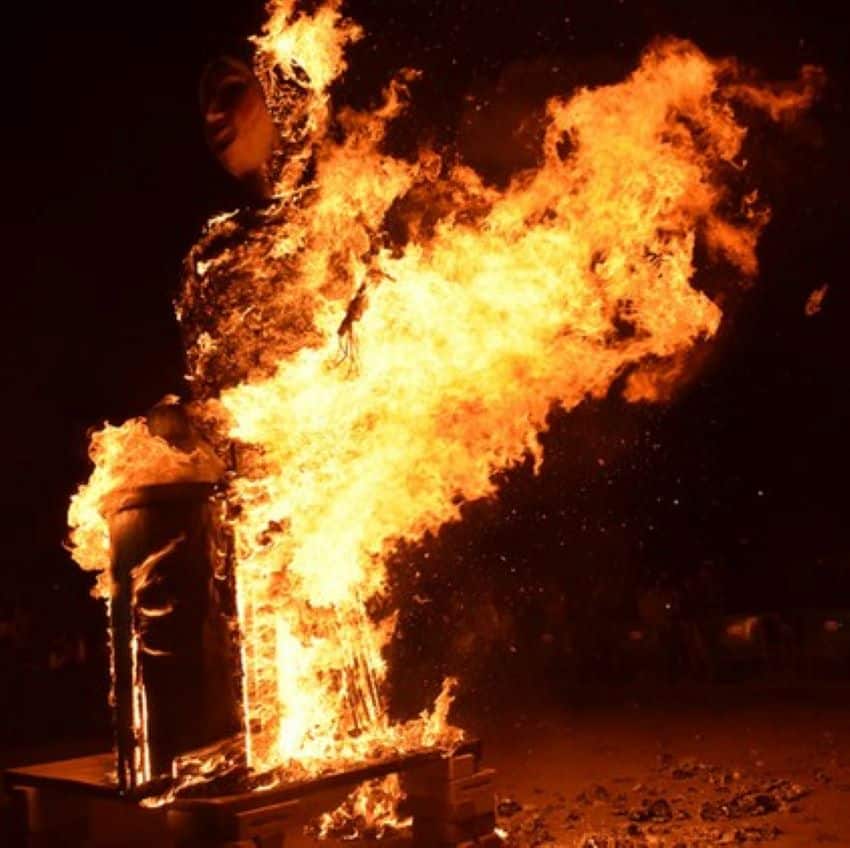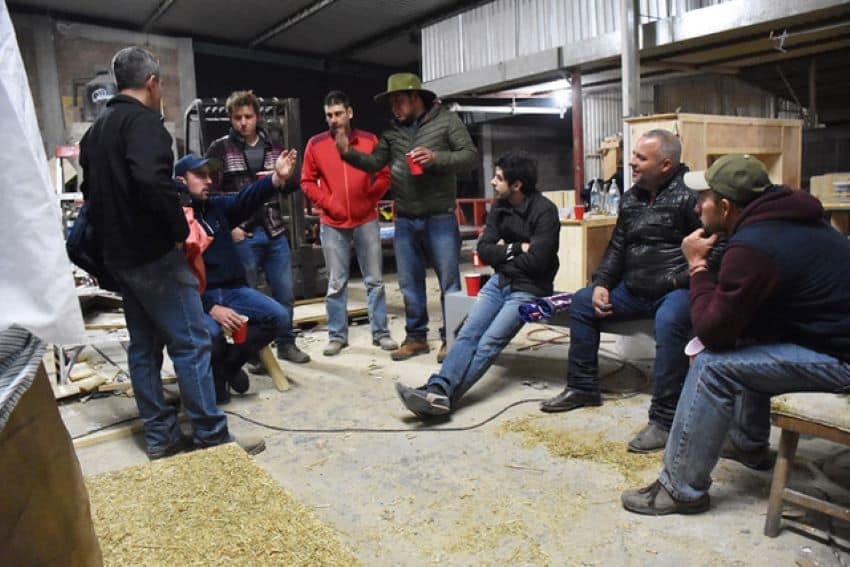The witch stood silent as gasoline was poured around her, her unflinching gaze aimed over the heads of the people who had gathered to watch her burn. A spark flared at the bottom of her dress, and flames slowly spread. As the flames moved upward, a cheer went up from the 2,000 people surrounding her, and soon she was completely engulfed in flames.
Happily, she wasn’t a real witch but La Befana, and the burning of the 4.5-meter-tall figure that represents her, called la quema, is a tradition observed in Chipilo, an Italian pueblo in Puebla.
La Befana made her way to Chipilo from the Véneto region of northern Italy, which is where the people that settled the pueblo originally came from in 1882. The tradition is observed on the night of January 5, but it wasn’t celebrated in Chipilo until Eduardo Piloni Stefanonni, the director of the town’s Casa d’Italia, visited Véneto in the mid-1990s and witnessed the ritual.
“I thought, ‘Why don’t we have this in Chipilo?’” he says. “It is part of our culture.”
So in 1998, the town added another Italian tradition.

The name La Befana comes from the Greek word for “epiphany.” The holiday of Epiphany, celebrated on January 6, commemorates the arrival of the Three Wise Men coming to see the baby Jesus in Bethlehem.
There are many stories about how La Befana came to be. In one version, the Three Wise Men lost their way as they traveled to Bethlehem and stopped to ask an old woman for directions. She didn’t know but gave them food and shelter. When they were leaving the next day, they invited her to join them, but she refused. She later changed her mind but couldn’t find them and now wanders the world giving candy to good boys and girls.
Although she’s a figure found throughout Italy, her reputation differs greatly depending on the region. In some areas, she’s a bad witch. But in parts of northern Italy and in Chipilo, “She is a good witch,” said Zuri Merlo, director of the Chipilo Nostro, a festival celebrating the town’s founding. “She has the power to get rid of bad things and bring good things.”
Her treatment varies as well.
“It is the custom in the north of Italy to burn her,” said Piloni. “From the central to the south, she is not burned. But in our region, Véneto, they burn her.”
And so they burn her in Chipilo as well.

Last year, beginning on October, 24 men belonging to the Grupo La Befana gathered in Francisco Berra’s carpentry shop to build the witch. Throughout the month and into November, the large room resounded with Spanish and the Venetian dialect as the men switched easily between the two.
“We’re a group of friends,” said Héctor Mazzocco Sevenello, the group’s leader. “We each pay 200 pesos for general costs. We meet on Mondays, Wednesdays and Fridays, about an hour each day.”
La Befana starts as a simple metal frame that’s then covered with strips of wood, cardboard and newspaper. She takes on a different look each year.
“Before, she was painted,” said Berra, “but now she’s dressed and we gave her hair. It’s more real.”
In addition to preserving a tradition from their homeland, La Befana has another purpose.
“It is the pleasure of being together,” said Mazzocco. “Many members are married, and they broke their routine to work on this. It is our culture, our tradition, our language and habits. They are all being lost, and we as members are motivated by these activities to continue preserving what came before.”
Early on January 5, La Befana was taken from Berra’s shop and placed in front of the church where she stayed until that evening, when her final journey began. She was loaded onto a trailer and driven slowly down the pueblo’s main street to the baseball field, accompanied by the ringing of a handbell and trailed by several dozen people.
At the ballfield, she was placed in the center of a large circle, surrounded by a large crowd. After she was doused with gasoline, Mazzocco began the countdown with the crowd joining in. At “uno,” she was set on fire and soon became a tower of flames.

“Some say the fire guides the Wise Men to Jesus,” said Mazzocco.
“Others say that it’s to bring light to the world,” Merlo added. “La Befana is a way to say good-bye to winter, to say good-bye to bad things in the past year. She takes all the bad things I want to get rid of.
And it is a time to meet, to be with others.”
When La Befana was nothing more than a large pile of smoldering ashes, members of Grupo La Befana handed out bags of candy to children. As the crowd drifted away, Merlo reflected on La Befana’s significance for the pueblo.
“These are traditions that bring chipileños closer to their roots. But it is also to share it with people from outside the pueblo.”
She then paused and added, “And it is a great chipileña party.”
Joseph Sorrentino is a regular contributor to Mexico News Daily.